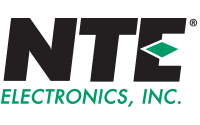
NTE Electronics, Inc.
NTE Electronics, Inc. is a prominent manufacturer and supplier of electronic components and accessories. With a history spanning over 40 years, the company has established itself as a trusted provider of high-quality products in the electronics industry. NTE offers a comprehensive range of electronic components, including semiconductors, resistors, capacitors, switches, relays, connectors, and more. These components are widely used in various applications, such as automotive, industrial, consumer electronics, and telecommunications. NTE focuses on delivering reliable and innovative solutions to meet the evolving needs of its customers. The company's commitment to quality is evident through its rigorous testing procedures and compliance with industry standards. NTE also offers value-added services like custom manufacturing, engineering support, and inventory management solutions to assist customers in optimizing their supply chain. With a global distribution network, NTE ensures efficient and timely delivery of its products worldwide. Overall, NTE Electronics, Inc. is recognized for its extensive product portfolio, exceptional quality, and customer-centric approach, making it a preferred choice for electronic components among professionals and hobbyists alike.
Rotary Switches
Results:
2
Series
Actuator Type
Actuator Length
Number of Positions
Number of Poles per Deck
Index Stops
Termination Style
Current Rating (Amps)
Angle of Throw
Contact Finish
Mounting Type
Depth Behind Panel
Circuit per Deck
Voltage Rating - DC
Contact Timing
Voltage Rating - AC
Contact Material
Features
Number of Decks
Results remaining:2
Applied Filters:
NTE Electronics, Inc.
About Rotary Switches
Rotary switches are mechanical devices that are specifically engineered to manage multiple electrical circuits by utilizing the rotation of a shaft. Through manual or mechanical interaction with the switch, electrical contacts are engaged or disengaged, thus enabling the establishment or disconnection of a series of electrical connections.
The selection of rotary switches is based on various factors such as the number of positions, the number of decks, poles per deck, mounting type, contact circuit configuration, throw angle, actuator type, and current and voltage ratings. The number of positions indicates the different settings or options available within the switch, while the number of decks refers to the individual switching stages within the device. Poles per deck signifies the number of separate circuits that can be controlled by each stage.
Mounting type is an important consideration, as it determines how the switch is physically installed or mounted in a device or system. Contact circuit configuration relates to the arrangement and connection of the electrical circuits within the switch. The throw angle describes the range of motion of the switch's actuator during operation.
Actuator type refers to the mechanism used to initiate the switch's movement, which can be accomplished through various means such as a knob, lever, or key. Furthermore, current and voltage ratings are crucial specifications that ensure the switch can handle the necessary electrical loads safely and effectively.
Some rotary switches are equipped with adjustable stops or have the ability to rotate continuously, providing additional flexibility and functionality for specific applications.
In conclusion, rotary switches are essential for controlling multiple electrical circuits via shaft rotation. Their selection depends on factors such as the number of positions, decks, poles, mounting type, contact configuration, throw angle, actuator type, and current and voltage ratings. Additionally, some rotary switches offer features like adjustable stops or continuous rotation to meet diverse application requirements.


